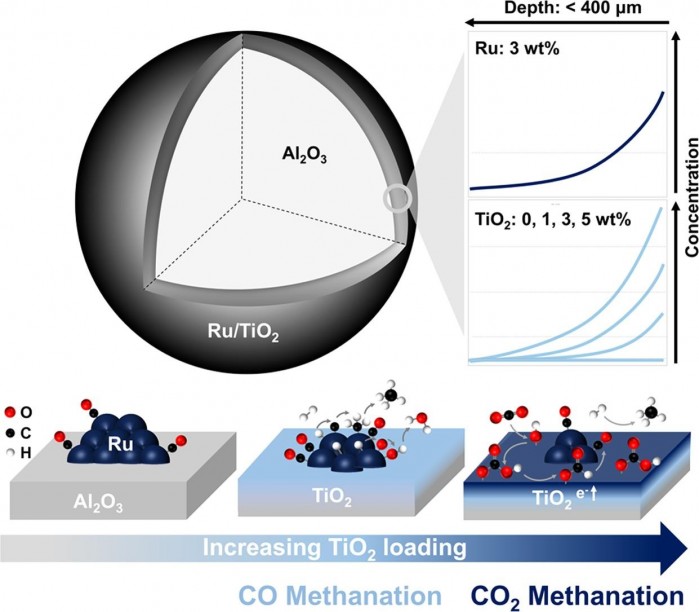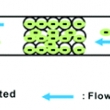댓글 쓰기 권한이 없습니다. 로그인 하시겠습니까?
Pore surface engineering of Al2O3-supported Ru catalysts with TiO2 for enhanced selective CO methanation
| Journal | Applied Surface Science |
|---|---|
| Author | Yu-Jin Lee, Kiwon Kang, Chan Kim, Jaewon Kirk, Hyuntae Sohn, Sun Hee Choi, Suk Woo Nam, Joohoon Kim, Hyangsoo Jeong, Yongmin Kim |
| Citation | Applied Surface Science, 2024, 657, 159551. |
| DOI | https://doi.org/10.1016/j.apsusc.2024.159551 |

Hydrogen-rich gas derived from hydrocarbons contains large amounts of CO2 and CO, with the latter being poisonous for low-temperature polymer exchange membrane fuel cell anodes. Therefore, the efficient removal of CO from reformate gases is crucial while minimizing the methanation of CO2 to reduce unnecessary hydrogen consumption. In this study, Ru-based catalysts, which are ready to be employed in a chemical reactor, are developed to selectively convert CO into CH4 with minimal CO2 methanation using a simulated gas mixture composed of 75 % H2, 24 % CO2, and 1 % CO. The CO adsorption capability of Ru catalysts was enhanced by controlling the surface pores with a TiO2 coating layer. In this process, egg-shell type TiO2/Al2O3 supports were synthesized by wet impregnation method, and then Ru was impregnated on the supports. This modification enabled the Ru/TiO2/Al2O3 to preferentially adsorb CO over CO2. Furthermore, by systematically varying the TiO2 loading, the electronic structure of Ru is modified to induce CO adsorption, resulting in a catalyst with maximum activity for selective CO methanation. The catalyst demonstrates a turnover frequency value of 8.6 × 10?3 s?1 at 190°C, surpassing the performance of previously reported catalysts.
-
Read More

Hybridization of DNA to bead-immobilized probes confined within a microfluidic channel
Category-2009 AuthorKim, J.; Heo, J.; Crooks, R. M. JournalLangmuir CitationLangmuir, 2006, 22, 10130-10134
-
Read More

Transfer of surface polymerase reaction products to a secondary platform with conservation of spatial registration
Category-2009 AuthorKim, J.; Crooks, R. M. JournalJ. Am. Chem. Soc. CitationJ. Am. Chem. Soc., 2006, 128, 12076-12077
-
Read More

Replication of DNA microarrays from zip code masters
Category-2009 AuthorLin, H.; Kim, J.; Sun, L.; Crooks, R. M. JournalJ. Am. Chem. Soc. CitationJ. Am. Chem. Soc., 2006, 128, 3268-3272
-
Read More

Parallel fabrication of RNA microarrays by mechanical transfer from a DNA master
Category-2009 AuthorKim, J.; Crooks, R. M. JournalAnal. Chem. CitationAnal. Chem., 2007, 79, 8994-8999
-
Read More

Replication of DNA microarrays prepared by in situ oligonucleotide polymerization and mechanical transfer.
Category-2009 AuthorKim, J.; Crooks, R. M. JournalAnal. Chem. CitationAnal. Chem., 2007, 79, 7267-7274
Designed by sketchbooks.co.kr / sketchbook5 board skin
Sketchbook5, 스케치북5
Sketchbook5, 스케치북5
Sketchbook5, 스케치북5
Sketchbook5, 스케치북5
.png)

